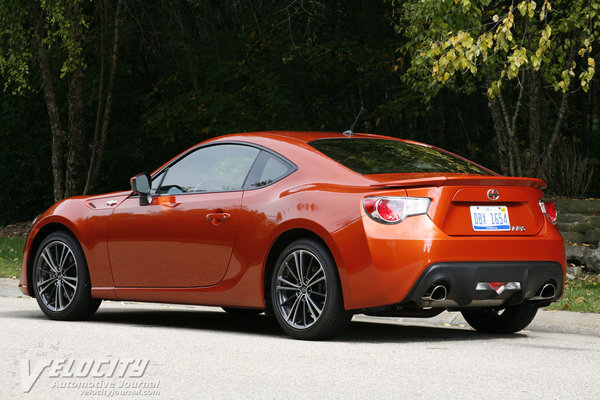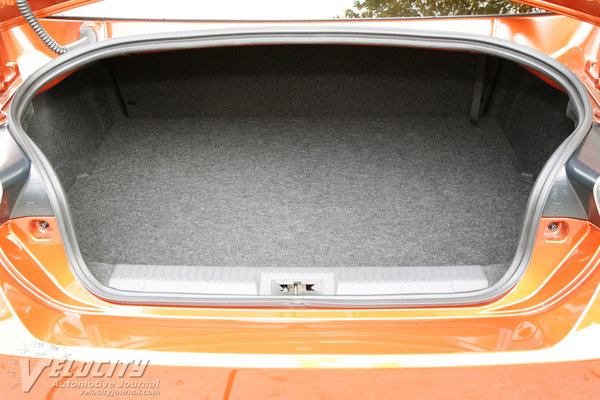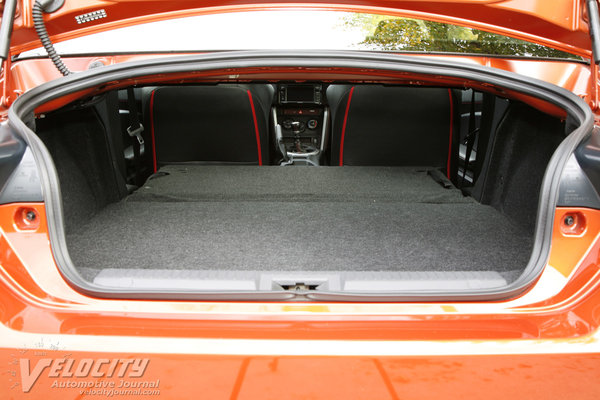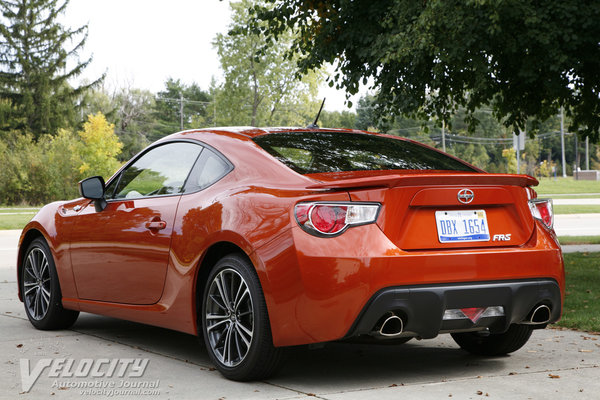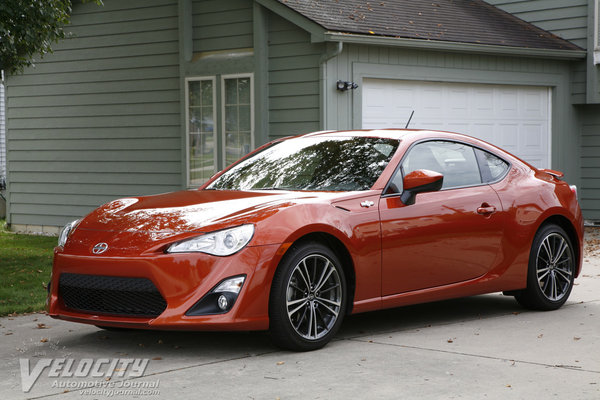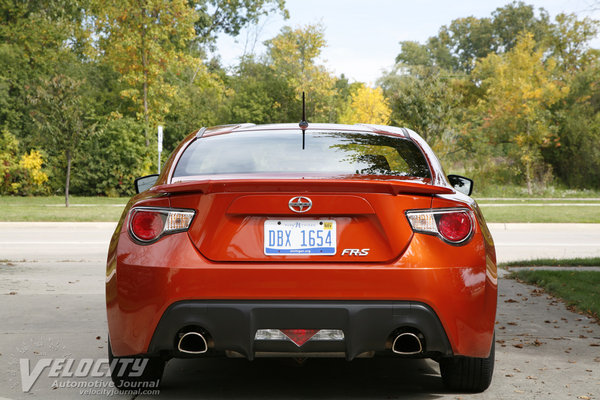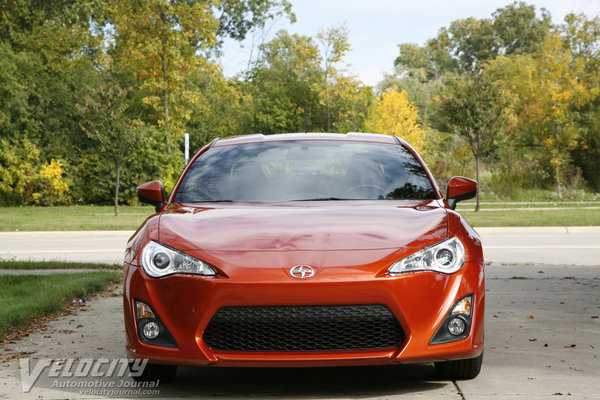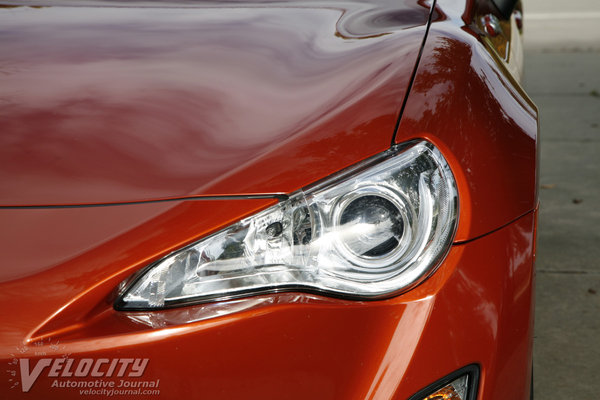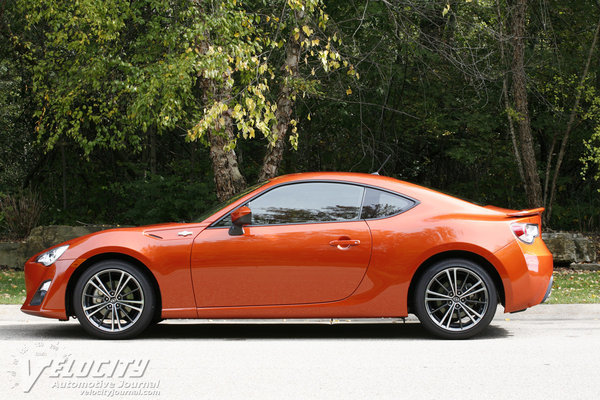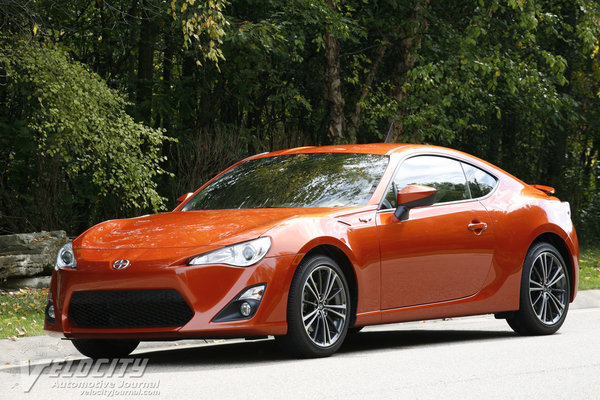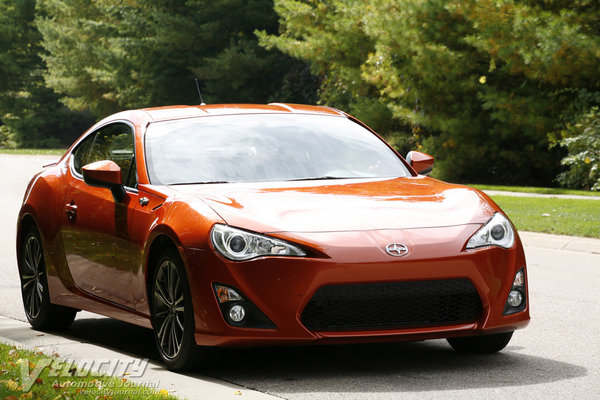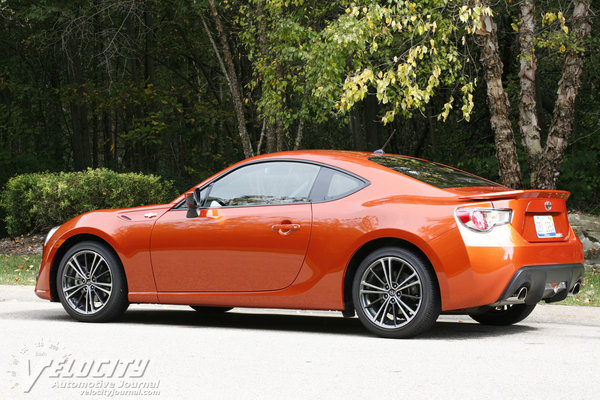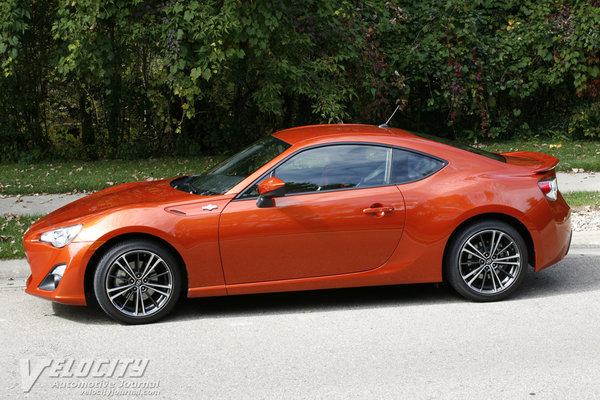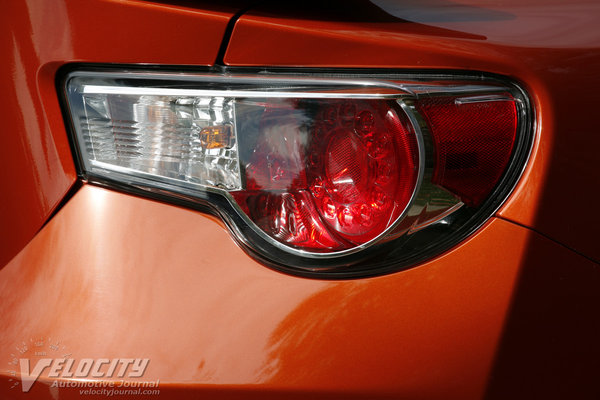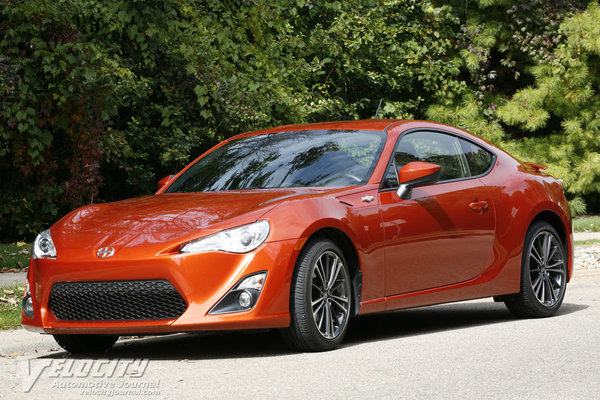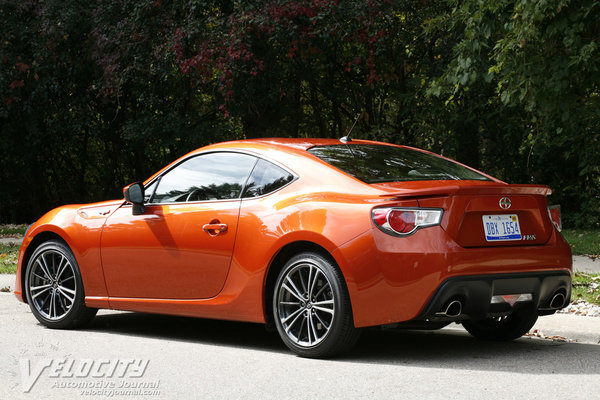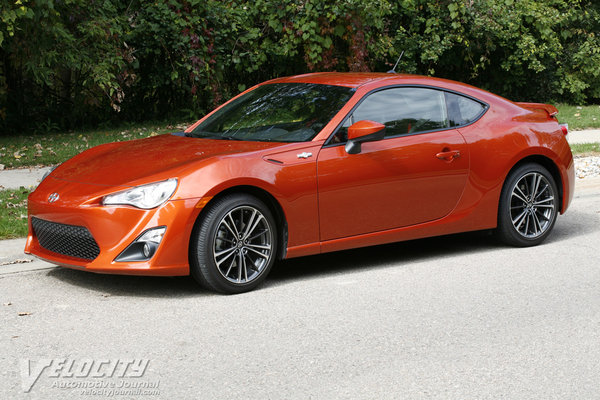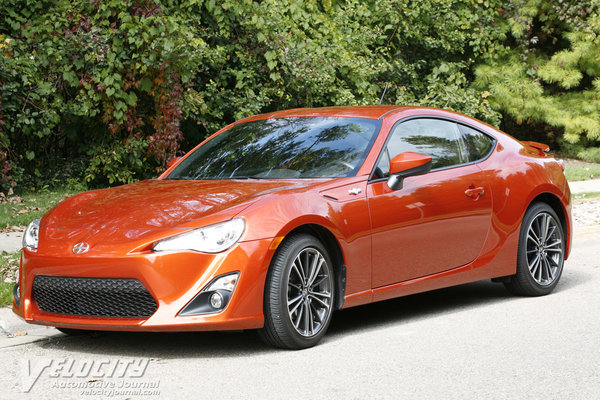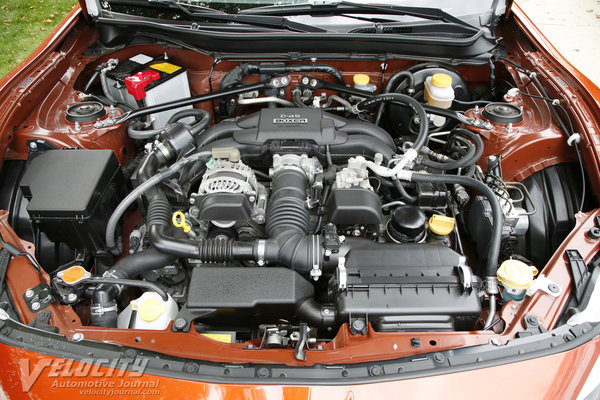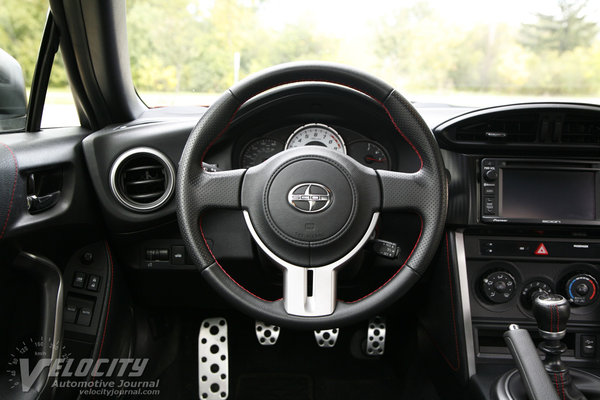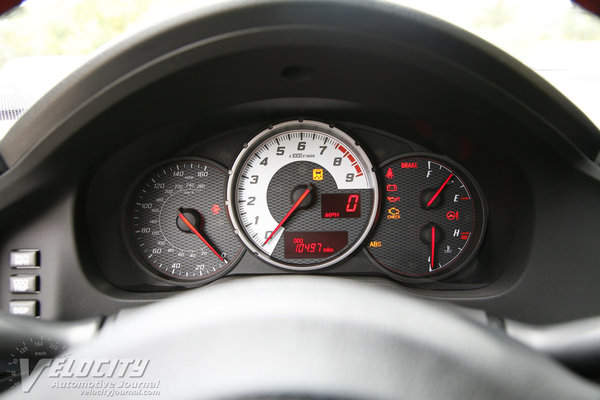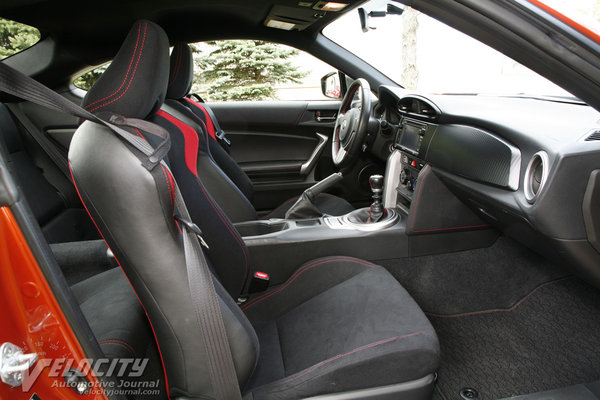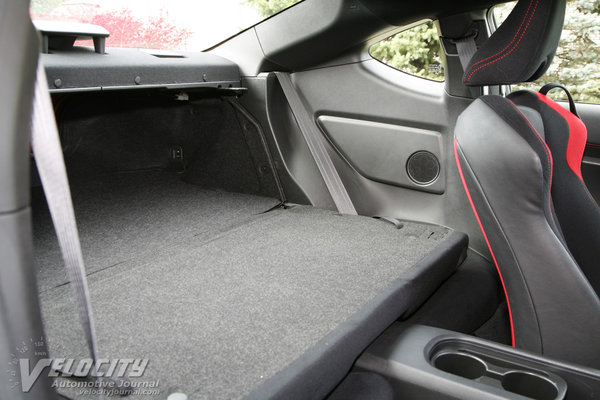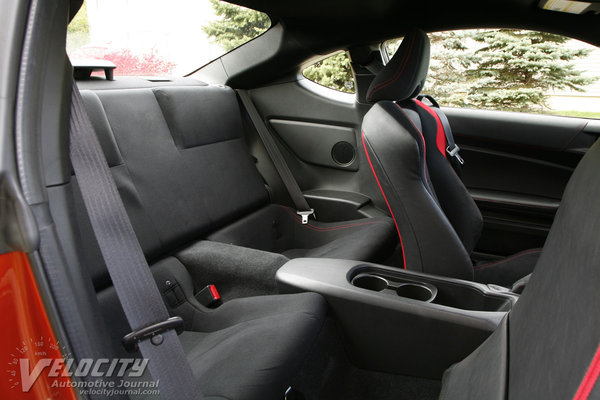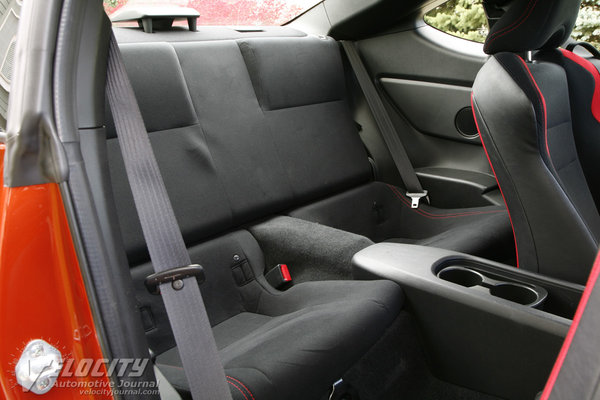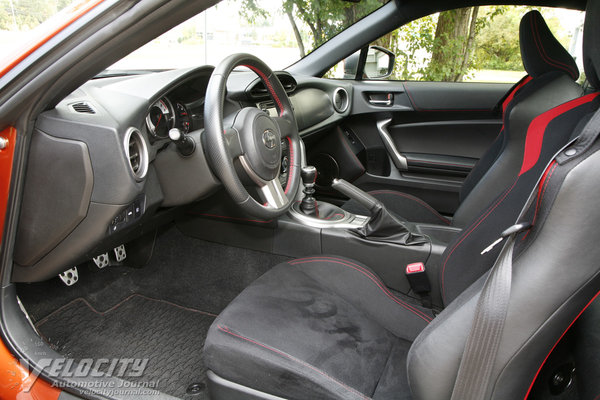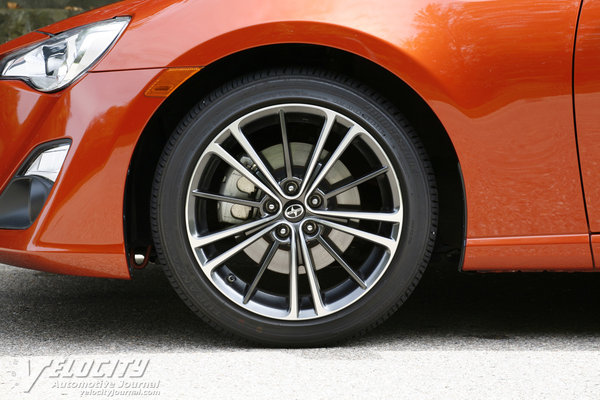2014 Scion FR-S
12/24/2014
Shahed Hussain
Scion caters to a younger market than Toyota, but until recently its practical and affordable vehicle lineup lacked anything for a serious enthusiast. Although Scion has the front-drive tC coupe in the model range, it competes in a crowded segment with entrants from nearly every mainstream brand. The FR-S was inspired by affordable rear-drive compact coupes like the Toyota Corolla GT-S and Nissan 240SX from the 1980s. Along with its Subaru BRZ twin, the FR-S has this niche segment nearly to itself, although the Hyundai Genesis Coupe is a similar contender. Enthusiasts could also consider the similarly priced, but larger Ford Mustang and Chevrolet Camaro.
The base price of the 2014 Scion FR-S starts at $24,700. Options on the test vehicle included fog lights ($490), BeSpoke premium audio ($1,198), rear spoiler ($399), and TRD exhaust system ($1,100). The total added up to $28,642 including the $755 destination charge. Available transmissions include the standard 6-speed manual transmission or a paddle shifter 6-speed automatic ($1,100). Scion also offers limited edition variants such as the FR-S Monogram Series ($28,170), equipped with leather/Alcantara(R) seats, HID headlights, and pushbutton start. The FR-S Release Series 1.0 ($30,760) is loaded with special TRD(R) body panels, plus chassis and interior trim upgrades.
Since the FR-S and BRZ share a common platform, both Toyota and Subaru contributed major components. The Scion's engine bay holds an all-aluminum dual overhead-cam 2.0L flat-4, courtesy of Subaru. Toyota supplies the D-4S direct and sequential port fuel injection system. Maximum power output is an impressive 200-bhp @ 7,000 RPM, and the 151 lb.-ft. torque peak occurs at 6,400 RPM. Unsurprisingly, the high compression (12.5:1) powerplant burns premium unleaded fuel.
Both manual and automatic gearboxes route power via a limited-slip Torsen(R) differential to the rear wheels via a 4.10:1 axle. The automatic transmission's overdrive ratios in fifth (0.713:1) and sixth (0.582:1) are both taller than sixth gear (0.767:1) in the manual gearbox. Enthusiasts will recognize that the shorter gears ratios (higher numerical) in the 6-speed manual are essential for best acceleration. EPA fuel consumption ratings are 22/30 MPG (city/hwy.) with the 6-speed manual. Opting for the 6-speed automatic improves the highway rating to 34 MPG, along with a 3 MPG increase in city fuel economy. In our manual transmission-equipped FR-S we matched the EPA 30 MPG highway rating, and achieved about 25 MPG in urban driving.
The FR-S uses a MacPherson strut suspension in front and a double wishbone, coil spring and damper layout at the rear. Front and rear stabilizer bars diminish body roll. Our test vehicle was shod with all-season P215/45R17Bridgestone Turanza EL400 tires mounted on 17 x 7-inch alloy wheels. Vented disc brakes at all four wheels provide stopping power. ABS, traction control (TRAC), brake assist (BA) and stability control (VSC) are standard. Steering is electrically assisted with a quick 2.48 turns lock-to-lock. Curb weight is only 2,758 lbs., or 2,806 lbs. when equipped with the automatic.
Within the FR-S is a functional cabin and straightforward controls. The driver faces a center-mounted 9,000 RPM tachometer, flanked by a 160-MPH speedometer to the left and smaller fuel and coolant gauges on the right. The sculpted leather-wrapped steering wheel is unexpectedly devoid of audio or mobile phone controls. The dashboard, upper door trim, armrests and other touch points are padded for occupant comfort. Aluminum pedals with rubber pads are a sporty interior accent. Behind the gear lever are buttons to engage the VSC Sport mode or to disengage the stability control completely. A dash-mounted LCD touchscreen for the audio and navigation systems is supplemented with knobs and buttons for frequently used controls. Knurled knobs for the heater and air conditioning systems are logically arranged for easy access. A small rubber flap conceals USB and analog audio inputs next to a storage slot at the bottom of the center stack. Other storage space is limited to door pockets and a small bin in the center console. Dual cupholders are located between the front seats.
The FR-S seats are upholstered in an attractive suede-like fabric. The driver's seat gets 6-way manual settings, but no lumbar support adjustment is available. Deep thigh and torso bolsters ensure that the driver and front passenger remain securely planted, but the seats are best suited for occupants with narrow hips. Front headroom is adequate if the driver is under 6 ft. height, so taller passengers will be forced to rake the seat back. Although the FR-S will hold a couple of petite adults in the rear bucket seats, legroom is scarce and occupants will bump their heads on the backlight glass. The rear seats do fold flat to expand cargo capacity.
Driving the FR-S is a reminder of the simple pleasures of a lightweight, rear-drive coupe. Superb steering feel and sharp turn-in allows the FR-S to respond quickly to driver inputs. Body roll is minimal in typical street driving conditions. The firm suspension tuning takes its toll on the highway, where the FR-S hops and thumps over the frost heaves and patched highways around Detroit. In states with better maintained roads, the Scion's ride quality is less likely to be objectionable. The brake pedal is firm underfoot, and the FR-S decelerates confidently from high speeds. The Bridgestones are not especially grippy, but the chassis tuning allows the rear tires breakaway gently when the modest traction limits are exceeded. Despite a standard Torsen(R) limited-slip differential, the rear tires often chirped around sharp corners.
The Subaru-sourced flat-4 has linear throttle response and surprising flexibility, accelerating from 2,000 RPM in sixth gear (albeit slowly). However, extracting decent performance requires shifting above 3,000 RPM, and maximum acceleration requires winding out the revs beyond the 6,400 RPM torque peak. The 2.0L revs eagerly to the 7,200 RPM redline, but transmits significant vibrations into the cabin as the revs rise. Moderate effort and progressive engagement allowed us to modulate the clutch as needed for smooth acceleration. The Scion's stubby lever connects directly to the gearbox for satisfyingly positive gearshifts. Our test vehicle was fitted with the optional TRD exhaust which transmits objectionable noise and vibration into the cabin between 3,000 and 4,000 RPM (around 70-80 MPH in sixth gear). The exhaust drone is especially annoying because it impedes conversation, and we found it fatiguing even on short highway journeys. Instead of spending $1,100 on the TRD exhaust, we think that money would be better allocated for an extra set of alloy wheels and summer tires.
As an affordable compact sports coupe, the FR-S has only the Subaru BRZ and Hyundai Genesis Coupe as rivals. Choosing between the Scion and the Subaru is essentially a matter of personal choice, or dealer availability. The Genesis Coupe packs significantly more horsepower, yet the Hyundai lacks the Scion's handling finesse. The FR-S certainly has its flaws, among them an engine that could be more polished and tires that lack adequate grip. Even so, we can only hope that more enthusiasts discover the delights of this appealing rear-drive coupe.

